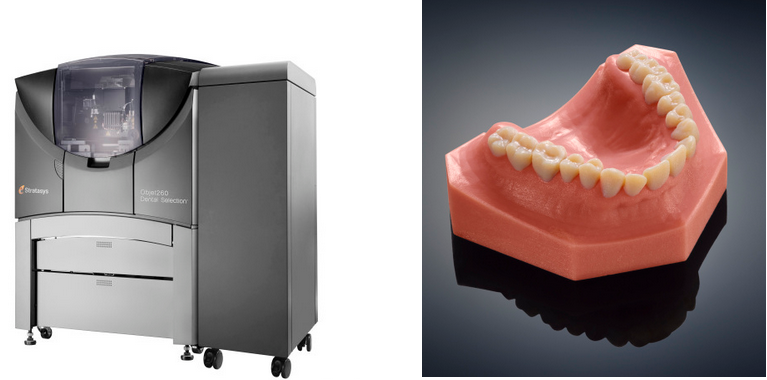
Stratasys has introduced a new addition to its line of dental printers, the Objet260 Dental Selection. Leveraging Stratasys’ unique triple-jetting technology, the Objet260 Dental Selection raises the bar in 3D printed dental model realism to improve the accuracy and efficacy of digital dentistry.
The versatile new 3D printer is designed to help mid- to large-sized dental and orthodontic labs grow their business by producing realistic models with true-to-life look and feel as part of their end-to-end digital dentistry workflow, including intra-oral scanners.
Its ability to build diverse models with multiple materials on one tray, in one print job, increases productivity which can further improve profitability.
“We are using the Objet260 Dental Selection 3D Printer to produce realistic 3D printed gingiva masks and models we couldn’t do before. We have not had 3D printed dental models that so closely resemble the actual teeth and gums,” said Stefan Remplbauer, general manager of Austria-based 3DMedicalPrint. “The initial reactions from our customers, which include dental technicians, dentists and surgeons, have been extremely positive. This is definitely going to help set 3DMedicalPrint apart from our competitors.”
Unprecedented true-to-life dental model realism
Pivotal to the capabilities of the Objet260 Dental Selection is the ability to enable dental and orthodontic labs to enjoy unprecedented realism of the stone models. This permits the production of life-like gum textures for precise functional testing, as well as a wide range of shades for customized, color matching.
The Objet260 Dental Selection 3D Printer is compatible with all PolyJet dental materials, plus an array of dental-specific material palettes to produce life-like colors and textures for teeth and gums. This allows users to serve a broader range of dental applications with a single system, reducing equipment costs. These usages span implant testing with stone models that mimic the look and feel of real gingiva for accurate functional evaluation, as well as models with rigid features that require gum-like materials. Labs can print surgical guides directly from CBCT scan data, with high-definition tooth, root and nerve-canal anatomy rendered in contrasting materials to help prevent dental nerve injury.
Read more at ENGINEERING.com

